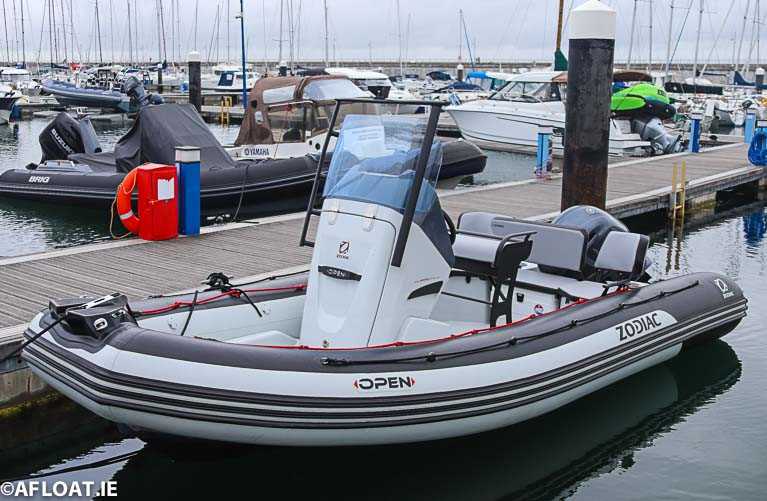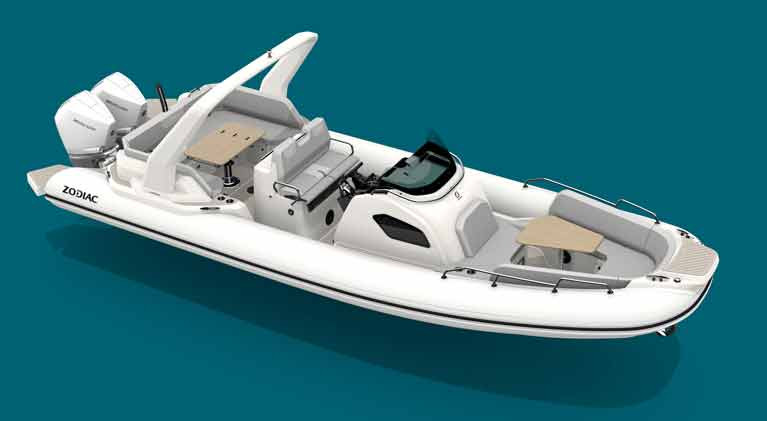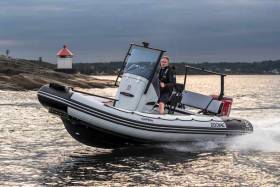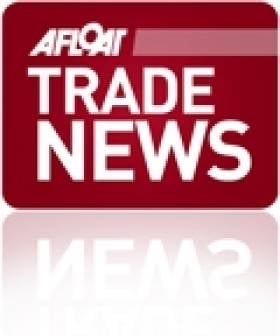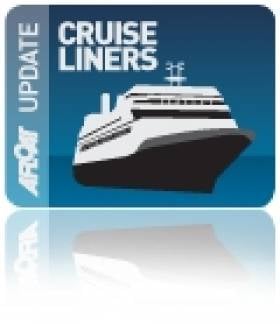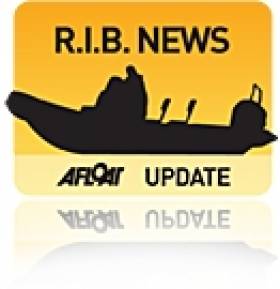Displaying items by tag: Zodiac
MGM Boats have delivered a new Zodiac Open 5.5 to a customer at Ireland's biggest marina at Dun Laoghaire on Dublin Bay.
The Dublin yacht broker, who took on the agency for the leading French RIB range in December 2019 are making good on their commitment to being able to supply boats for the Summer 2020 season despite all the COVID-19 setbacks. At the start of the pandemic, the go-ahead marine company introduced 'Social Distancing Boat Shopping', a successful means of boat buying during the lockdown and MGM continue to operate a COVID-19 Service & Lift Procedure from their boatyard at Dun Laoghaire Harbour.
The recently delivered Zodiac Open 5.5 RIB is a useful size for diving, fishing, underwater hunting, work or pleasure trips. It comes with the ability to configure the layout for your own needs. More info here
MGM Boats Announce Medline 9, Zodiac's Biggest Ever RIB
MGM Boats at Dun Laoghaire Harbour have announced the launch of the biggest ever RIB built by international manufacturer Zodiac.
The French RIB builder and their Irish agents are making the most of the lockdown with the virtual launch of its 'big boy', the nine-metre 'Medline 9' RIB.
The new 55-knot top speed craft Medline represents a year and a half of research and development. (Download the spec sheet below).
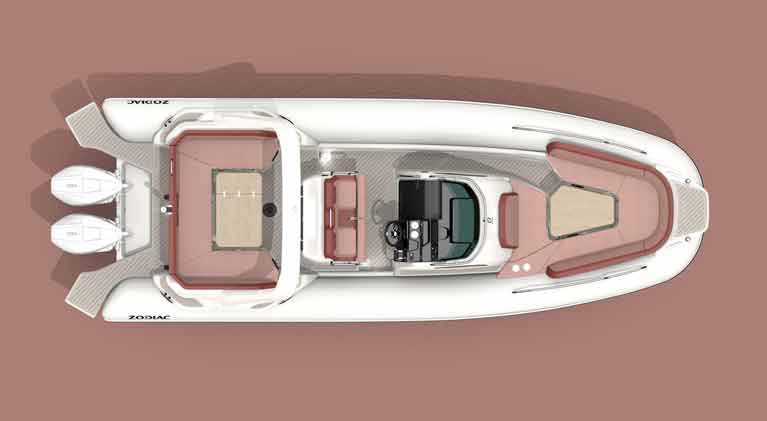 Medline 9 top view
Medline 9 top view
Zodiac already has 20 orders worldwide for the new marque that has yet to have its press sea trials because of COVID-9 restrictions.
Zodiac collaborated with the French agency DEMS to design the boat that accommodates up to fourteen people sitting down. Its clever bolster seat arrangement allows three sittings (two adults and a child). There are seven storage compartments.
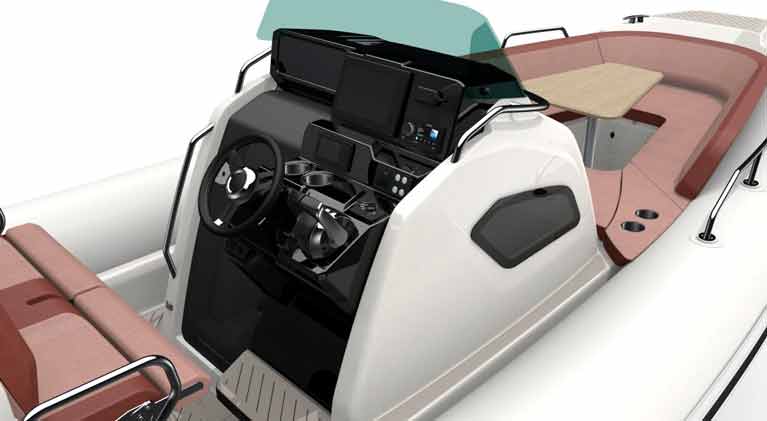 Medline 9 console
Medline 9 console
As a result, the new edition has 'all you need in order to spend a long time on water', says Gerry Salmon of MGM Boats. The boat is equipped with a cabin with a removable bunk, 'so it is possible to overnight onboard or ideal just for a good nap', Salmon adds.
A toilet, a shower as well as a kitchen complete the standard equipment.
Download spec sheet below
MGM Boats Is New Irish Zodiac RIB Distributor
Top Irish boat dealer MGM Boats has added the Zodiac Inflatable and Rigid Inflatable Boat marque to the range of boats offered at its Dun Laoghaire Harbour showrooms.
In announcing the new distributorship, Dublin Bay-based MGM Boats has launched a promotion on the new Open 5.5 metre RIB, a popular size model in Ireland.
The new 5.5 has a Deep V fibreglass hull and a self-bailing deck. Full spec here.
More details from MGM Boats here.
53 Degrees North Store Opens at Western Marine
53 Degrees North, Ireland's Outdoor Adventure Stores with branches already at Carrickmines and Blanchardstown - caters to Climbing, Hillwalking, Biking, Camping, Hiking, and of course watersports including Kayaking, Sailing, Surfing and Swimming.
Western Marine, Ireland's Largest Marine Distributors, was established in 1966 and is based at Bulloch Harbour since 1968. Western Marine caters to all marine markets, from sailing and motorboating to commercial workboats, and specialises in inflatable boats and RIBs as well as a huge range of marine equipment, lifesaving equipment etc.
Commenting on the new store, Western Marine's MD, Hogan Magee said "We're very enthusiastic about this venture - 53 Degrees North carry a full range of clothing, footwear and equipment from value for money through to top end premium quality products and that fits very well with our own philosophy of providing of premium quality at affordable prices.
The two ranges are complimentary, with very little product overlap, and the result is a truly comprehensive watersports display that we think is unparalleled anywhere in Ireland".
53 Degrees North MD Alan McFarlane said "We're really excited about this. Western Marine has a superb reputation in all marine markets, and the combination of the Western Marine and 53 Degrees North brands will give us both a wonderful opportunity to grow our businesses.The huge range of watersports gear which we offer now has a waterside home, and a whole new customer base. With free car parking spaces available in the adjacent boatyard, shopping with 53 Degrees North at Western Marine could not be easier"
Among the huge range of brands now available under one roof are worldwide leaders including Zodiac inflatable boats and RIBs, Teleflex steerings and engine controls, Skipper and Besto lifejackets & buoyancy aids, Icom VHFs, Gleistein yacht ropes, McMurdo EPIRBs, Harken, Lewmar, Garmin GPS, Pains Wessex Flares, Musto, Helly-Hansen and Henri-Lloyd sailing clothing, Dubarry marine footwear, O'Neill wetsuits, Oakley eyewear, surfboards by Cortez, and kayaks by Islander and Wilderness.
The new store is open 7 days a week throughout the Summer, with opening hours 9am to 6pm Monday through Saturday, and 1pm to 6pm on Sunday
A Former Royal is Set to Return
At 6,000 tonnes, the luxuriously appointed expedition cruiseship caters for only 132 guests. She is designed to explore remote waters and with an ice-strenghtened hull she can provide destinations that include the polar ice-caps. Shore-based excursions from the ship are taken by a fleet of Zodiac-craft to transport passengers to isolated locations.
Onboard the Bahama-flagged vessel, passenger can browse in the boutique, sip a drink in the internet café, enjoy a full-service spa, take a beauty treatment in the salon, get fit in the gym or take it easy in the sauna. Plus there's live-evening entertainment and not forgetting the two top-deck whirlpools.
For a vessel of this size her facilities are comparatively impressive to the large cruise giant's such as the Grand Princess. She became the first cruiseship to measure over 100,000 tonnes when she made an inaugural call to the capital in 2004.
Nearly 300m long the vessel is the equivalent in length to three football pitches. The ship may not actually feature a playing pitch though she does have a nine-hole putting golf course!
The Avon SeaRider Becomes the Zodiac SeaRider
One of the best known RIB makes in the world, the Avon Searider, with hundreds in service with schools, clubs and commercial organisations around Ireland, and literally tens of thousands with similar organisations all over the world, has been treated to an upgrade and will now be sold as the Zodiac SeaRider.
Avon has been owned by Zodiac for many years now, but up until now, the two ranges were sold under separate brand names, and through separate distribution networks.
As part of a wider product integration programme, both ranges will now be sold exclusively through the Zodiac network, and under the Zodiac brand name.
This programme has already seen upgrades to the specification of the Zodiac Grand Raid range of inflatables, long established as the benchmark for commercial inflatable boats, as well as to the Avon W range of WorkBoats, now known as the Zodiac WB range of WorkBoats. These upgrades include even heavier Hypalon fabric, heavier duty standard equipment, new features fitted as standard, and a wider range of heavy duty consoles and seating.
The SeaRider range will continue to be built in the Avon factory in Llanelli, in Wales, as will the new WB series of WorkBoats, ERB Rescue Boats etc. They still offer the same outstanding performance, feature the same materials, and same "bulletproof" construction. The flooding bilge design provides ballast to make the SeaRider a stable platform while stationary at sea.

This feature is a hallmark of the SeaRider range, and is indespensible to divers, port authorities, military and race managers alike. The photo above shows a prototype SeaRider 5.4m in mid air, with old style Avon fendering. The first models in the New Zodiac SeaRider livery are due in Ireland within the next 14 days, and they look really well with the dark grey hull and deck, grey tubes and extra wide heavy duty black fendering.
Zodiac SeaRiders will also be available to special order in the old Avon colour scheme of Grey tubes with Orange Hull and deck - this will involve a slightly longer lead time, but gives fleet owners the possibility of adding new boats to their fleet in the same colour scheme as existing boats. The new Zodiac MilPro catalogue, incorporating models from both Zodiac and Avon ranges will be available shortly. However, we wanted to bring this news to you as soon as possible and we will contact you again with more information in the near future.
The sole importer for Zodiac in Ireland is Western Marine in Dalkey, Co. Dublin.


























